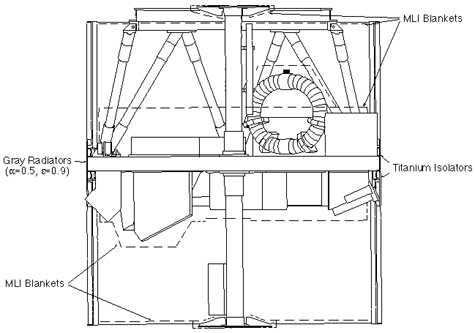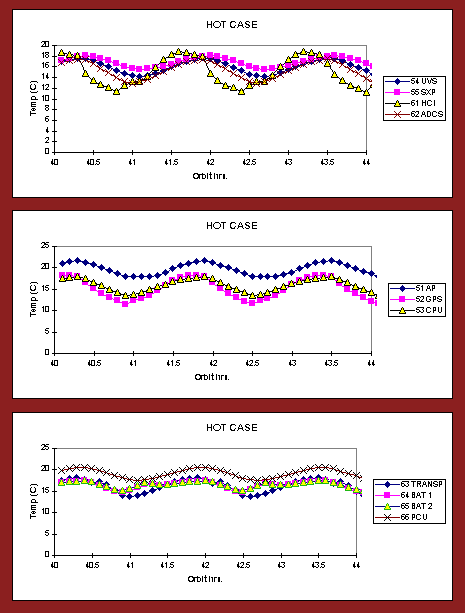TCS
Thermal Control System
The SNOE thermal design is implemented by isolating the central plate from the rest of the spacecraft and the external enviroment as much as possible, with the exception of the six radiator panels. This isolation is accomplished with four sets of thermal blankets, two on each side of the central plate and two on each end of the spacecraft. The solar panels, which are permitted large temperature fluctuations, are isolated from the central plate by titanium thermal flextures. The radiators are coated with a durable ceramic that precisely controls their radiative properites with alpha=0.5 and epsilon=0.9. (The radiator by the SXP was painted black to slightly raise the temperature in that part of the spacecraft.) Thus, the essential thermal balance of the central plate is between electrical energy dissapated by the componets mounted on it, absorption of solar and earth radiation through the radiators, and emission by the radiators.
A time-dependent thermal model was constructed using SINDA-G and TRASYS to predict the response of the spacecraft to the orbital environment. The model (apart from its solar component) was validated during thermal vacuum testing.
Other SNOE thermal graphical diagrams:


